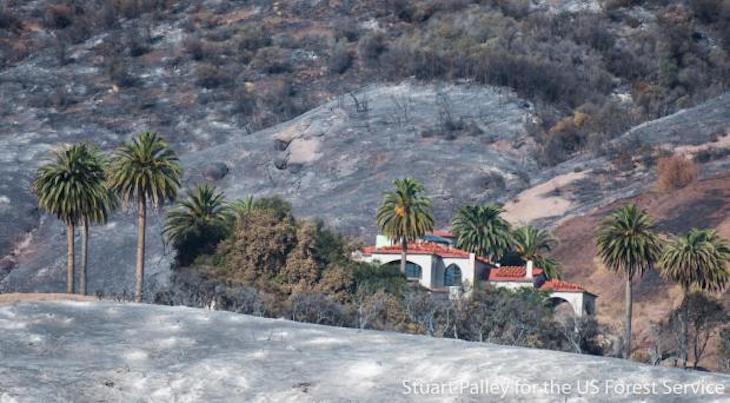Source: Los Padres National Forest Service
Before a wildfire is fully contained or extinguished, a national forest begins work on repair and restoration of the landscape and planning for post-fire risks. Floods and debris flows often occur after fires. Although these natural processes cannot be prevented there are ways to prepare. Post-fire recovery and response for the land can be described in three stages: rapid assessments, suppression repair and natural succession.
Rapid assessments begin as soon as burned areas can be safely accessed and are completed within days of full containment. Within National Forest System lands, assessments are performed by a specialized Burned Area Emergency Response (BAER) team. A BAER team is a multi-disciplinary group of federal natural resource specialists who assess the burn’s severity and identify areas prone to flooding, debris flows or other risks resulting from the wildfire. The final BAER assessment report for the Thomas Fire is expected by mid-January.
Because the Thomas Fire burned across state, federal and private land, similar assessments were performed by a Watershed Emergency Response Team (WERT), coordinated through CAL FIRE and the California Geological Survey, on non-federal lands.
Data compiled by the BAER and WERT teams are passed along to county agencies to help them develop emergency response plans for communities that might be impacted by floods, debris flows or other hazards from the fire.
As a wildfire is contained, firefighter efforts shift from managing the fire to repairing damage caused by suppression efforts, a process commonly referred to as “suppression repair.” Common suppression tactics and activities that displace vegetation and disturb soil are fire line construction (dozer and handline), as well as the clearing of terrain for helispots, safety zones, spike camps, staging areas and to access drop points and water sources. Roads also can be damaged from the increased use by heavy equipment.
Suppression repair techniques, such as constructing water bars to dissipate water or slow its flow, as well as returning or scattering shrubs and herbaceous plants along created contingency lines, reduces erosion and returns a natural seed source to the environment. Suppression repair also mitigates visual impacts on the landscape and works on reducing the establishment of noxious weeds. Suppression repair also protects sensitive habitat, natural or cultural resource areas, as well as prevents the unauthorized establishment or use of trails or roads.
The last component of a forest’s recovery from wildfire is natural succession or recovery. Wildfire is a natural component of many forest ecosystems, especially in the western United States. The plants and animals, as well as the ecological functions, within these systems have evolved or adapted over time to handle and recover from wildfire on their own. In areas not immediately threatening life, property or sensitive natural or cultural resources, the landscape will be left to repair itself through natural processes.
On a case-by-case basis, sensitive resource areas might need more active forest management if resource specialists find exceptional circumstances impeding natural recovery. Resource specialists assessing damage from the Thomas Fire have already observed new vegetation sprouting and recovering within the burned area.




